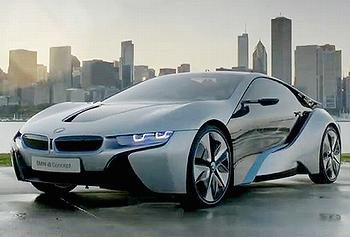
WASHINGTON, DC, March 19, 2013 (ENS) – By the year 2050 – in less than 37 years – the United States could cut petroleum consumption and greenhouse gas emissions by 80 percent for cars and small trucks, finds a new National Research Council report released Monday.
There is no single “silver bullet,” said chair of the committee that wrote the report, Douglas Chapin, but the shift can be made with a winning combination of more efficient vehicles; alternatives like biofuels, electricity, and hydrogen; and strong government policies to overcome high costs and influence consumer choices.
“Such a transition will be costly and require several decades, but “we’re talking about 90 to 100 or more miles per gallon,” he said.
Chapin, who is a principal of the policy analysis and research consultancy MPR Associates of Alexandria, Virginia, said the 80 percent goal is “difficult but not impossible to meet if supported by strong national policy.”

“Even if the goals are not completely met, partial success also produces benefits,” Chapin told reporters on a telebriefing Monday. “Societal benefits mean energy saving for the community as a whole.”
But improved efficiency alone will not meet the 2050 goals, he said. The average fuel economy of vehicles on the road would have to exceed 180 miles per gallon, which, the report says, is “extremely unlikely with current technologies.”
So, the study committee also considered other alternatives such as hybrid electric vehicles, plug-in hybrids, battery electric vehicles, hydrogen fuel cell electric vehicles, compressed natural gas vehicles.
“To reach the 2050 goals for reducing petroleum use and greenhouse gases, vehicles must become dramatically more efficient, regardless of how they are powered,” said Chapin. “In addition, alternative fuels to petroleum must be readily available, cost-effective and produced with low emissions of greenhouse gases.”
The committee calls its calcuations “exploratory and highly uncertain,” but says they indicate that the energy cost savings, improved vehicle technologies, better fuel economy and reduced greenhouse gas emissions are worth more than the costs of the transition over and above what the market is willing to do on its own.
Reducing greenhouse gas emissions for all fuels means they must be produced and used without large emissions of carbon dioxide. And, warned the committee, to the extent that fossil resources are used to generate electricity, “the successful implementation of carbon capture and storage will be essential.”
While corn-grain ethanol and biodiesel are the only biofuels to have been produced in commercial quantities in the U.S. to date, the study committee found “much greater potential” in biofuels made from lignocellulosic biomass – which includes crop residues like wheat straw, as well as switchgrass, whole trees, and wood waste.
This “drop-in” biofuel is designed to be a direct replacement for gasoline and could lead to large reductions in both petroleum use and greenhouse gas emissions, the committee states. It can also be introduced without major changes in fuel delivery infrastructure or vehicles.
The report finds that enough cellulosic biomass could be produced by 2050 to meet the goal of an 80 percent reduction in petroleum use when combined with highly efficient vehicles.
Electric vehicles, of course, do not emit any greenhouse gases, but there are other barriers to their wider adoption.
The production of electricity and the additional load on the electric power grid are factors that must be considered, the committee points out.
Also while EV batteries are projected to drop steeply in price, their limited range and long recharge times are likely to limit the use of all-electric vehicles mainly to local driving. “Advanced battery technologies under development all face serious technical challenges,” the committee states.
Committee member John German, a senior fellow with the International Council for Clean Transportation in Washington, DC, told reporters that batteries are tested under “extreme operating conditions” such as temperatures from minus 40 degrees to 120 degrees. “There are some batteries out there that can go 300-400 miles,” he said, “but you still have the recharge issue of 20-30 minutes. Solid state batteries, lithium air – they all have some problems on the energy side.”
Considering hydrogen fuel cell vehicles, the committee acknowledged that the only emission is water and said they could become less costly than advanced petrol-powered vehicles of 2050.
But there are problems here too. The committee warned that developing a hydrogen infrastructure in concert with a growing number of fuel cell vehicles will be “difficult and expensive.”
Greenhouse gases are emitted during hydrogen production, and the low-greenhouse gas methods of making hydrogen are more expensive and will need further development to become competitive, the committee reports.
It is impossible to know which technologies will ultimately succeed, the report says, because all involve uncertainty. The committee believes that the best approach is to promote a portfolio of vehicle and fuel research and development, supported by both government and industry, designed to solve the critical challenges in each major candidate technology.
Copyright Environment News Service (ENS) 2013. All rights reserved.
© 2013, Environment News Service. All rights reserved. Content may be quoted only with proper attribution and a direct link to the original article. Full reproduction is prohibited.
